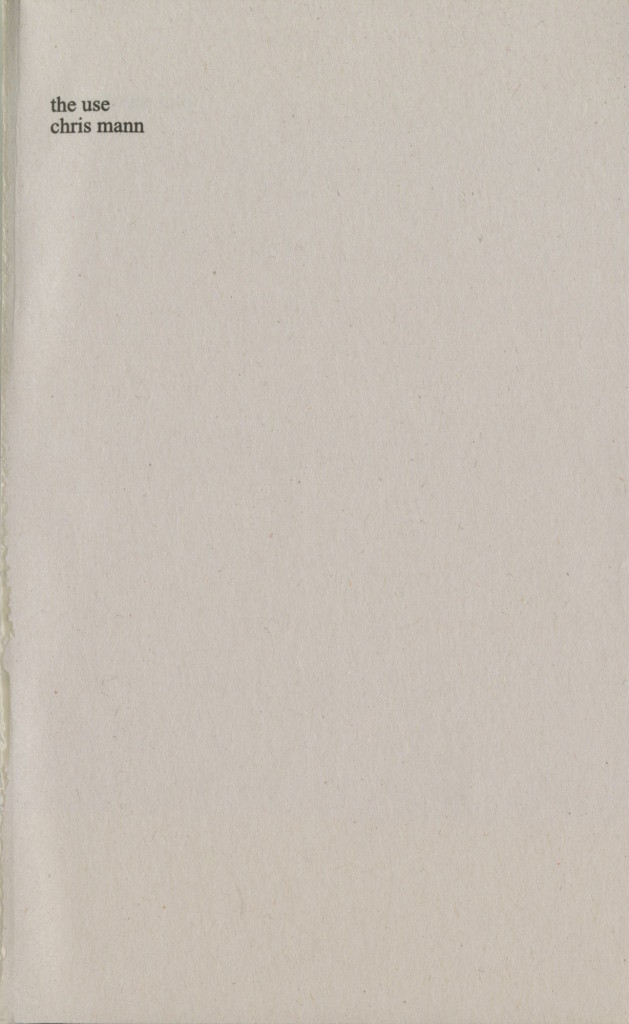CHRIS MANN
THE USE
$10–SOLD OUT
The Use is a book of writing by Chris Mann. It is also a translation of his ongoing web project theuse.info. Materially, it is as humble as a book can get. Exposed glue binding, newsprint, pocket sized—it almost apologizes in your hand. A life of work presented like a small phone book, good call.
The writing is undomesticated and has difficult pages, pages that sometime track their own difficulty. Take this one I picked almost at random:
“…how you talk to a machine (you know, whether fiction plus fiction counts as Nonfiction, (i mean artificial intelligence consists in expecting our experience of any industrial cognitive array to be different to our experience of, Law say, or, Economics, and Nobody understands law, nobody understands economics. this is called a Loop, or Copyright, dialup Disco. (i mean you Could call this, The Diagnosis (the powerpoint definition of acquisitive redundancy, all ambient delay and petty denIal, an amylnitrate alias outsource of(Success is the argument that it was Always better not to think, the Effect effect (with the witness as Output (one of those moody taxonomies the proud are so prOud of (, though as the witness is the last moment of nostAlgia .. its the Signal is the bitch. not even bOring ..”
As with most of Mann’s work, the sentences are made from language foraged partly from everyday American speech and partly from technical and academic corridors. The above excerpt gives you a good sense of how the words run a course between extremities and comes to sound like a mind-solving-problems, a mind most drawn to problems that cannot be solved. It has been said, “Chris Mann specializes in the emerging field of compositional linguistics, described by [himself] as ‘the mechanism whereby you understand what I’m thinking better than I do.’”
The book comes with a set of postcards designed by Barbara Bloom.
Published by Juana Berrío and Yale Union. 488pp, 4 1/4″ x 6 3/4″, 2016. Printed in an edition of 1,000 at Linco Printing, Long Island City, NY. Bound by Gary Robbins at Yale Union. Typeset in Times New Roman by Scott Ponik.
ISBN 978-1-934399-25-5
Chris Mann (born 1949) moved to New York in the 1980s and was as an associate of American composers John Cage and Kenneth Gaburo. He has collaborated widely with filmmakers and electronic music composers. In 2013, Mann worked with Sepand Ansari to create a website-based project, 010011.net, in correspondence with the exhibition “As it were … So to speak: A Museum Collection in Dialogue” with Barbara Bloom at the Jewish Museum in New York. Initially loaded with a library of 1,000 texts representing a wide range of disciplines, the site enables users to search for an idea and make rich and ever deeper associations. In contrast to Google, which provides a prepared answer if you ask the right question, 010011.net is a celebration of the question you are trying to learn how to ask. Mann currently teaches in the Media Studies Graduate program at The New School, New York.
We would like to express our sincere gratitude and respect to Chris Mann. We also want to thank Barbara Bloom, Dena Beard, and Alejandro Cesarco.
This book was made possible thanks to the generous support of Ross Sappenfield.
